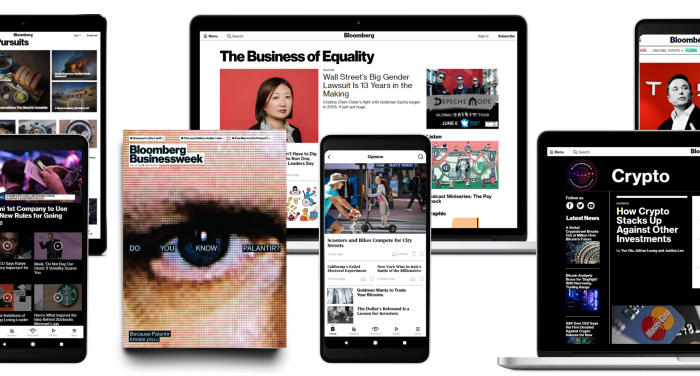
A couple of months ago, college dorms and dining rooms and lecture halls were full. But, starting in early March, campuses in the United States began closing in an attempt to slow the spread of the coronavirus within their close-quartered communities. Now, students are trying to study and figure out what the pandemic’s unprecedented economic impact will mean for their future — whether they’re hitting the job market in a few months or a few years — from home.
Bloomberg Media thinks it can help — while giving a lot of future knowledge workers the chance to sample its wares. Starting today, the company is giving every undergraduate and graduate student free access to Bloomberg.com — normally locked behind a paywall for $40/month or $475 a year — until the end of July.
The news follows a similar offer from The New York Times, which announced three months of free access for students earlier this month. Launched in (presumably paid) partnership with Verizon, the Times limited its offer to high school students in the United States.Bloomberg is casting their net wider — and slightly older. Although the company limits its regular student subscription pricing to those based in the United States, any college student in the world can register with their university email to redeem the priced-for-a-pandemic offer.
That’s…a lot of students. Just under 20 million people started the fall semester at a college or university in the United States, and many times that are enrolled worldwide. Bloomberg, which bills itself as a premium global news organization with reporters in more than 120 countries, said a global offer made sense given its audience. (Roughly 40 percent of its subscribers are based outside the United States.)
Lindsay Horrigan, Bloomberg Media’s global head of subscriptions and consumer marketing, said college students “are the rising generation of decision-makers who also need to navigate and make sense of a rapidly evolving world,” and thus prime targets for a Bloomberg pitch.
The company says it isn’t thinking of the offer as a free trial, or even a play for subscriber acquisition — instead, it’s “a necessary service for our audience during this time,” Horrigan said. Okaaaaaay. But finding ways to incentivize sampling is critical to any paid subscription model, especially a comparatively high-dollar one like Bloomberg’s.
The offer is unique for Bloomberg Media, which includes Bloomberg News, Bloomberg Businessweek, and Bloomberg Opinion. Aside from short small-scale offers when their paywall launched in May 2018, this is the first time that the media brand has made content freely available.
Bloomberg, like a lot of news organizations, had a very good March, reaching more than 119 million unique visitors — its all-time record — and audiences have continued to grow in April. Despite lifting the paywall on some coronavirus content, the company also reported four times the number of daily average subscribers in March.
We lifted the paywall on our coronavirus coverage. Get the best Bloomberg has to offer in our daily newsletter https://t.co/chw0IHMOJj
— Bloomberg (@business) March 12, 2020
As Joshua Benton wrote in his piece on the Times offer, there aren’t a ton of financial downsides to limited-term deals like these.
Presumably, the students will get some version of the standard onboarding for new Times subscribers, which pushes newsletters and podcasts like The Daily. Those embed the Times into a daily ritual, either in their inboxes or their podcast app. And if a student subscribes to any, those will keep coming after the three-month free access is over.
The Times also gets all those kids’ email addresses — admittedly, probably their school addresses instead of their Gmails — which (a) makes them registered, logged-in users, making it possible to learn their preferences and what kind of content they like, and (b) opens the door to future email marketing.
Bloomberg Media has newsletters and podcasts to push, too — and students who sign up for Matt Levine’s Money Stuff would continue getting the newsletter come August.
So all that — and maybe some good will, too.